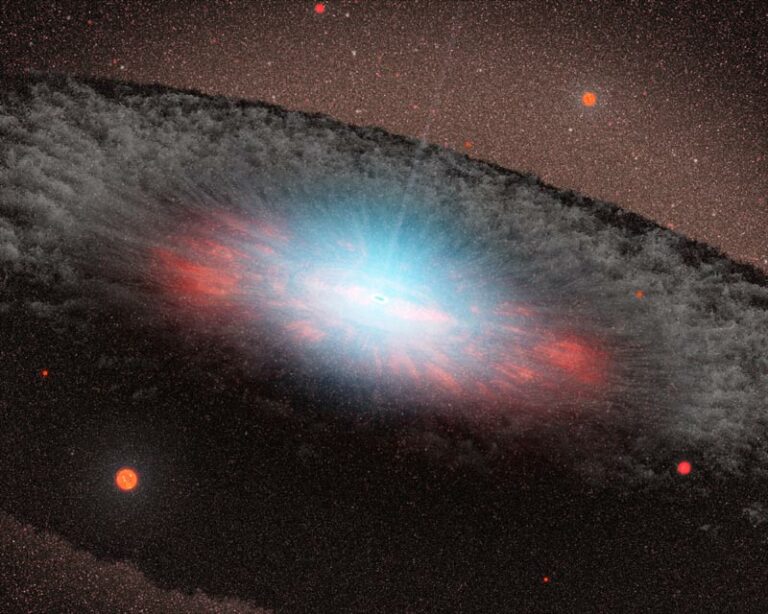Research Suggests Black Holes May Expand to 50 Billion Suns Before Their Nourishment Transforms into Stars
Research conducted at the University of Leicester suggests that black holes located at the center of galaxies can grow to a size 50 billion times that of the sun before losing their gas discs, which are essential for their sustenance. Professor Andrew King from the Department of Physics and Astronomy at the university explored the growth potential of supermassive black holes and the instability of the gas discs surrounding them. These discs provide fuel for the black holes as gas falls inward. However, they are prone to collapsing into stars.
Professor King’s calculations determined that a black hole would need to reach a mass of 50 billion solar masses to prevent the formation of a gas disc. This study implies that without a disc, the black hole’s growth would cease, making 50 billion suns the approximate upper limit. The only scenarios in which it could grow larger would be if a star directly fell into it or if it merged with another black hole. Professor King emphasizes that this discovery is significant because astronomers have identified black holes close to the maximum mass by observing the radiation emitted by the falling gas disc.

The mass limit suggests that this method would not detect significantly larger masses, as there would be no luminous disc present. While it is theoretically possible for black holes to have larger masses, such as through mergers, these events would not produce light, and the resulting black hole would lack a gas disc that emits light. However, it may be possible to detect these larger black holes through other means, such as gravitational lensing or the emission of gravitational waves predicted by Einstein’s General Theory of Relativity.
This article is republished from PhysORG under a Creative Commons license. Read the original article.
Do not forget to share your opinion with us to provide you with the best posts !




0 Comments